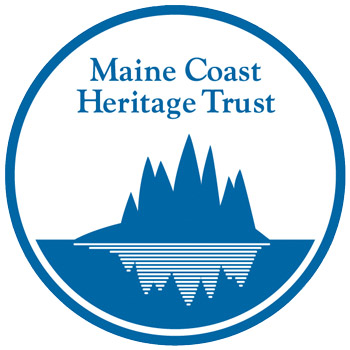Shared Trails
Maine’s stunning coast has inspired painters and poets, but today, most of it is privately owned and off-limits. Land trusts work to make more scenic vistas accessible to all.
❯❯ The fruits of that work include Bog Brook Cove, a 1,770-acre preserve in the down east towns of Cutler and Trescott. Maine Coast Heritage Trust assembled the preserve over 10 years and built trails leading to secluded beaches, granite outcrops, and spectacular lookouts, plus a universally accessible path accommodating wheelchairs and strollers.
Meadows
In a state that’s 95 percent forested, meadows offer critical habitat for songbirds like bobolinks, and they host wildflowers that attract pollinators like hummingbirds and bumblebees.
❯❯ Meadows are a key feature of preserves like Woodward Point, an 82-acre parcel on the New Meadows River that Maine Coast Heritage Trust and Brunswick-Topsham Land Trust conserved in 2019.
Forests
Forests play a key role in mitigating the impacts of climate change, as trees pull carbon dioxide out of the atmosphere and store it, and provide habitat for wildlife like moose, bears, and deer.
❯❯ Among other woodland conservation projects, Maine Coast Heritage Trust, Frenchman Bay Conservancy, The Nature Conservancy, and other groups have conserved more than 60,000 forested acres between Schoodic Mountain and the Schoodic Peninsula, ensuring that this important ecosystem remains protected forever.
Working Harbors
As development pressures intensify, land trusts are working to protect working waterfronts, the economic lifeblood of many coastal communities.
❯❯ In Lubec, Maine Coast Heritage Trust conserved an 11-acre waterfront parcel protecting access to one of the only viable boat launches between Cutler and Lubec. The land trust added a new ramp and parking lot and made other improvements to create safer, sustainable access for commercial fishermen and recreational boaters.
Islands
Maine has more than 2,400 coastal islands, more than any state except Alaska, and they are an iconic part of the state’s landscape, as well as important habitat for seabirds.
❯❯ Maine Coast Heritage Trust has helped conserve more than 330 islands, and is now working to protect Little Whaleboat Island, one of the last undeveloped islands in Casco Bay.
Farmland
As development threatens Maine’s saltwater farms, land trusts are working to sustain local agriculture.
❯❯ Maine Coast Heritage Trust acquired Rockport’s Aldermere Farm in 1999, ensuring that a legacy of cattle farming continues there. MCHT also maintains community gardens on its preserves at Erickson Fields in Rockport, as well as Babson Creek and Kelley Farm preserves, which are on Mount Desert Island.
Marshes
Marshes provide habitat where clams and many other commercial species nurse their young and find shelter from predators. As sea levels rise, marshes absorb water like a sponge, buffer storm surges, and protect surrounding areas from flood damage.
❯❯ Maine Coast Heritage Trust, Royal River Conservation Trust, and Freeport Conservation Trust are partnering to conserve an 82-acre marsh on the Cousins River in Yarmouth. It’s one of dozens of marsh-preservation projects MCHT has worked on along the coast.
Maine Coast Heritage Trust is the only land trust working along the entire coast. It has conserved more than 150,000 acres, created 150 preserves, and built more than 100 miles of trails over the past 50 years.
This year, join the effort to protect Maine’s coast and make sure this incredible place remains accessible to all by giving at give.mcht.org.





